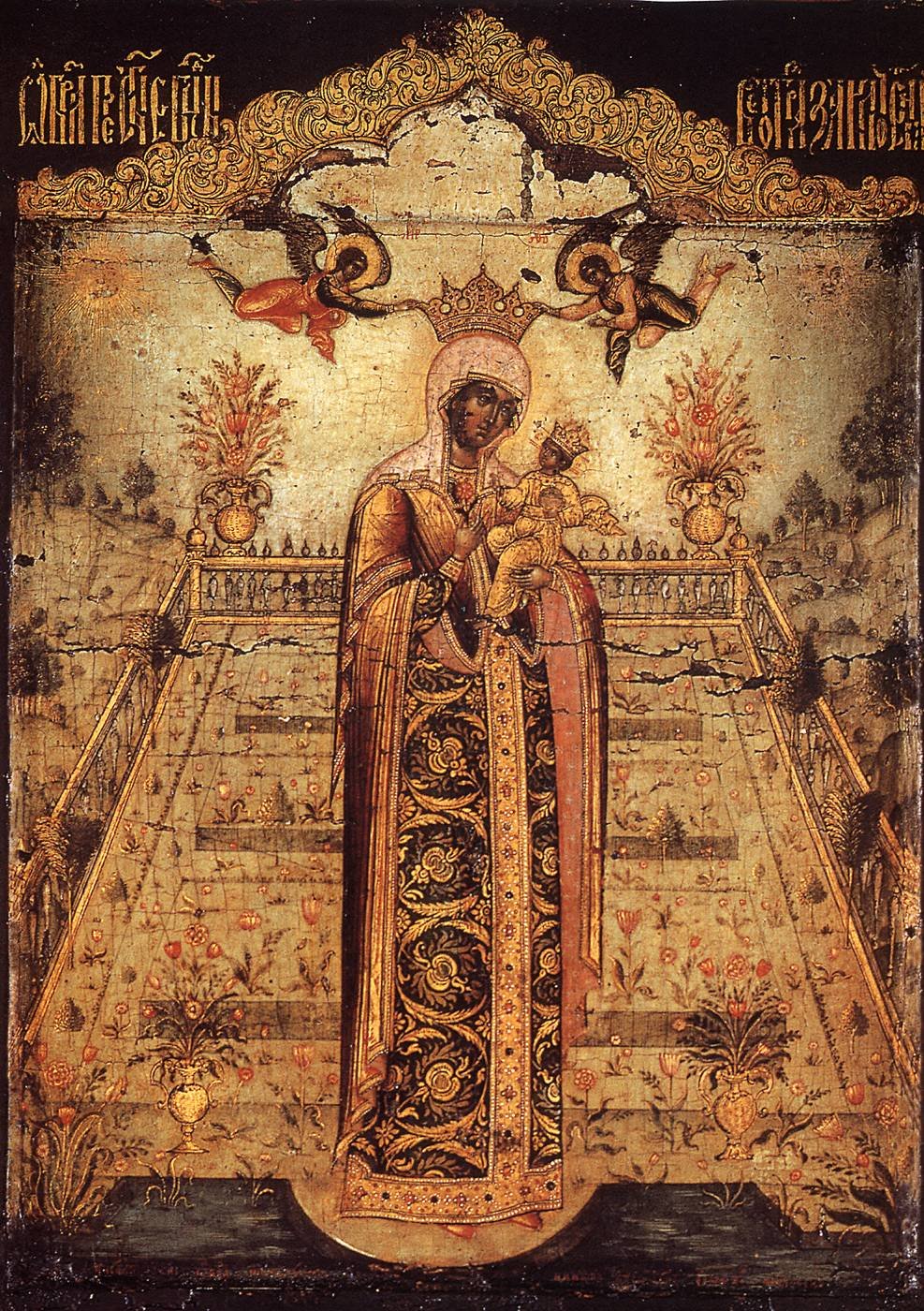Hortus conclusus is the archetype of an enclosed garden.
A walled garden, one with a fenced enclosure, became synonymous with the term “garden” in medieval times. Its nomenclature, “hortus conclusus,” is believed to originate from King Solomon’s “Song of Songs” 4:12 "
"Hortus conclusus soror mea, sponsa, hortus conclusus, fons signatus" / "A garden enclosed is my sister, my spouse; a garden enclosed, a fountain sealed up."
Hortus conclusus protected the private precinct from public intrusion, creating a protective barrier, in essence bringing nature within its walls. It was created out of practicality when man feared the wildness of the landscape, (animals and intruders) and chose to erect a protective barrier.
Almost every brownstone or townhouse garden in Brooklyn or Manhattan is an enclosed space, with the house on one side and fences at least 6 feet high around the remainder of the rectangular lot. This design is typical of a hortus conclusus.
Some scholars propose that hortus conclusus may have begun as enclosed hunting parks evolving to smaller contained areas with wattle fences for keeping livestock. Another direct influence could be attributed to the inward focused Roman peristyle or cortile. Either way, it manifested itself as walled gardens for the aristocratic class to delight in. Within, they would have servants tend plants or create an idyllic retreat for sitting, dancing and playing instruments. Others would stroll and contemplate their faith. The only continuously existing medieval gardens today are monastic cloister gardens.
The Garden as Metaphor
The enclosed garden was a common setting for images of the Virgin Mary in medieval artwork. According to Elizabeth Barlow Rogers, Landscape Design: a cultural and architectural history–
“the notion of the garden as an enclosed space, set apart, and infused with metaphorical meaning – a representation of nature perfected through human art in the service of an ideal – is fundamental to our understanding of the history of landscape design.”
This genre became symbolic of impenetrability, inviolability (purity) and seclusion, a metaphor of the heavenly paradise and the Garden of Eden. As the space created is literally focused inward, it becomes a figurative expression of spirituality.
Within medieval paintings and tapestries the Virgin is typically shown in a meadow with walls or a fence encircling her, embraced by angels and saints, plant material abounds which may include the following within this setting: a rose, a lily, violets and an iris. The symbolism behind the plant material -- violets for her modesty, the white lily for her purity and the iris is representative of David or Christ. The thornless rose itself was a medieval symbol of the Holy Virgin, the primrose was a virginal guide to paradise, primroses were known as “the key to heaven”… salvation was to be found through nature... in this case a garden. (Interestingly, the word “paradise” is derived from the Persian word “ pairideaza”, which when literally translated means “surrounded by walls.”
In the middle of a hortus conclusus, may also be found a fountain, pool, pond, or well, referencing the water of life and Mary's role in bringing life to the infant Jesus. The division of the garden into quadrants by four distinct paths – is perhaps an influence from the chahar bagh. Occasionally a unicorn may be found within this setting, emblematic of chaste love or as an allegory representing Christ’s relationship with the Virgin Mary.
In secular terms the garden became a symbol of earthly love, typified by Guillaume de Llorris 13th century poem the Roman de la Rose, an allegory of man and an enclosed garden. In this walled garden, the interior represents romance, while the exterior is emblematic of everyday life, the lover endeavors to reach the rose which symbolizes his lady’s love.
Walled gardens. Axis mundi.
Relationship with the heavens is emphasized in a walled garden as it eliminates the outside world converging the garden below with the heavens above - an axis mundi. There is a stark contrast between the containing walls and the vertical endlessness of the sky – truly a vertical landscape.
Artificial nature is the basis for the hortus conclusus - shutting the space off from the outside world, creating an image of an inner paradise. One could begin to suggest that this archetype has been translated into present day public pocket parks in urban centers. The vest pocket park in American cities is a contained space with walls created by adjacent buildings and “protected or defended” by security guards or vendors.
Paley Park in Manhattan at 53rd and Fifth Avenue is an excellent example of this. The fact that the park is “guarded” by the food service vendor is key to its success.
A more private example would be the jewel box size gardens behind brownstone buildings - as an oasis, a refuge of peace and tranquility among the chaos within the urban infrastructure.








